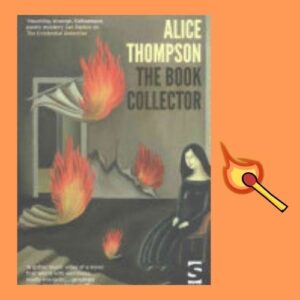
Book Name: Invisible Man
Author: Ralph Ellison
Publication: Penguin
Pages: 608
Price: Click the link
Author:
Afro-American novelist and literary polymath Ralph Waldo Ellison (1914-1994) is best known for his novel Invisible Man. It was published by Random House in 1952. For this book, he won The National Book Award in 1953.
Introduction:
‘I am an invisible man.’
It is the story of a black man on a quest to find his true self while facing racism and disrespect from all sides. It is not like the self-imposed invisibility as we find in H.G. Well’s The Invisible Man. Here is Ralph Ellison’s Invisible Man, there is no scope of imagination or fiction or a way towards greater mystery. As human existence and atrocities are the most mysterious thing to chew on this earth. In this light, this novel is a great product of his time and an important voice of the Civil Rights Movement. It reminds me of Dorris Lessing’s The Grass is Singing.
Invisibility:
The invisibility on the part of the narrator is not only physical but also emotional. Every time he feels this identity crisis in the power bound white society. He does not find any viable way to fix his problem, to prove his identity in this society. On the contrary, everywhere he is taught to diminish himself, hide, negate his existence. So, he escapes in the underground through a manhole.

Causes of Invisibility:
The invisibility is not self-attributed or due to any physical deformity on the narrator’s part. On the other hand, it is imposed by social hegemony. As can be seen, invisibility is the result of the failure of white people to understand African-Americans as fully human with equal attributions.
-
“I’m invisible simply because people refuse to see me.”
-
” That invisibility to which I refer occurs because of a peculiar disposition of the eyes of those with whom I come in contact.”
The theme:
The first and foremost theme of the novel is invisibility. Throughout the novel, the black curtain of invisibility keeps knocking the conscience of humanity. The anonymous narrator is a black man. Under the light of the monopolized white society, he is an invisible man. The invisible narrator has to earn his credit, his hard-earned scholarship at the cost of humiliation and demeaning activities to please the white aristocracy. He was forced to fight a battle with other blindfolded black men. In addition to that, they are forced to scramble over electrified rugs to collect copper and gold coins. Their pain and bruises were the sources of others’ pleasure like the ancient gladiators. Throughout his life, the narrator only experienced the ever-expanding demarcated line between his life and the others.
Search for Identity:
In a society torn up in complex racial barbarism one’s identity gets lost again and again. A black man always has to live and identify himself by the values and expectations imposed on him under a certain prescribed role. In the whirlpool of racial prejudice, bigotry of behaviour, social injustice individual identity loses track. The novel is a stirring narration of his vulgar experiences in the colour biased society where black identity is diminished or ignored. In addition to that, a black man has to live within the pattern of behaviours prescribed by white society. This continuous negation of identity and disregard of humanity reverberated in the voice of the narrator.
Fake Institutions:
All through his life, the narrator comes across a series of communities like Liberty Paints Plant, Brotherhood which all are in an oblique way endorsing a black man’s behavioural code to adjust in a white society. They are the other terms of Ideological state apparatuses only meant for organized manipulation.
The Refusal:
Embittered by the world of colour disparity of the narrator took refuge in an underground cell, avoiding all the illumination of so-called society. In the original world, he always faces the stereotypes of diminishing a black man’s identity. Getting distorted by the negation, the exclusion, the diminishing attitude of society and patronized institutions he submerged in hibernation. Disenchanted and depressed by his experience to cope with and fight he comes to realize the utter powerlessness. So he escapes avoiding the indignities of the oppressive class.
The Return:
But finally, in the end, he determines to come out of his hibernation cell to mark his contribution to society. In that dark underground cellar, he finds his identity. He decides to exhort his presence and make others accept his behaviour neglecting their prejudiced expectations from him.
“Even hibernations can be overdone, come to think of it. Perhaps that’s my greatest social crime; I’ve overstayed my hibernation since there’s a possibility that even an invisible man has a socially responsible role to play.”
Aggregate so many aspects:
The novel though focused on the main theme of invisibility, segregation and racial inequality, yet incorporates other aspects like Harlem Renaissance, Surrealism, the interplay of different State Apparatuses. All the ideologies and promises that the so-called institutes propagated are fake and illusory. Oppressive State Apparatus and ideological State apparatus work at the same time.
Symbol:
Ralph Ellison’s Invisible Man is intricately designed with the symbiosis of myth and symbol. The idea of invisibility is reinforced by the recurrent image of vision and wearing glasses.
In the royal battle, the boys were blindfolded. Brother Jack the leader of the Brotherhood has a glass eye. Again the narrator’s invisibility is confused with the black glasses he wears. Again whatever the narrator tries to believe and keep faith in throughout his life proves false and fake ultimately.
Alvina’s Verdict:
-
The igniting prologue of Invisible Man accelerated my reading but at a later half, I feel bored and lost in the maze of complex themes and language. The plot and the theme are woven so intricately that I have to keep patience to understand and track my way headed through it.
-
Yet I must acknowledge it is a brilliant work of Ellison. It is a classic elevation of a universal theme i.e. racial disparity. And here the author has cobbled together all the sufferings of a dark man in a contemporary Afro-American society of the early 20th century with a metaphoric emblem.
-
This book has relevance even in today’s society, as we must acknowledge nothing has changed. The cruel death of George Floyd at the hand of the barbaric white police and such other incidents prove that systematic racism is still now integral in American life.
-
The book ends with an affirmation, a beacon-light in the voice of the narrator who decides to come back from his hideout and speak for the world: “Who knows but that, on the lower frequencies, I speak for you?”







Pingback: The Grass is Singing, Doris Lessing, Book Review
Pingback: I Know Why the Caged Bird Sings by Maya Angelou
This is the right website for anybody who would like to find out about this topic. You know so much its almost tough to argue with you (not that I really will need to…HaHa). You certainly put a brand new spin on a topic that’s been discussed for many years. Great stuff, just great!
Pingback: Native Son by Richard Nathaniel Wright